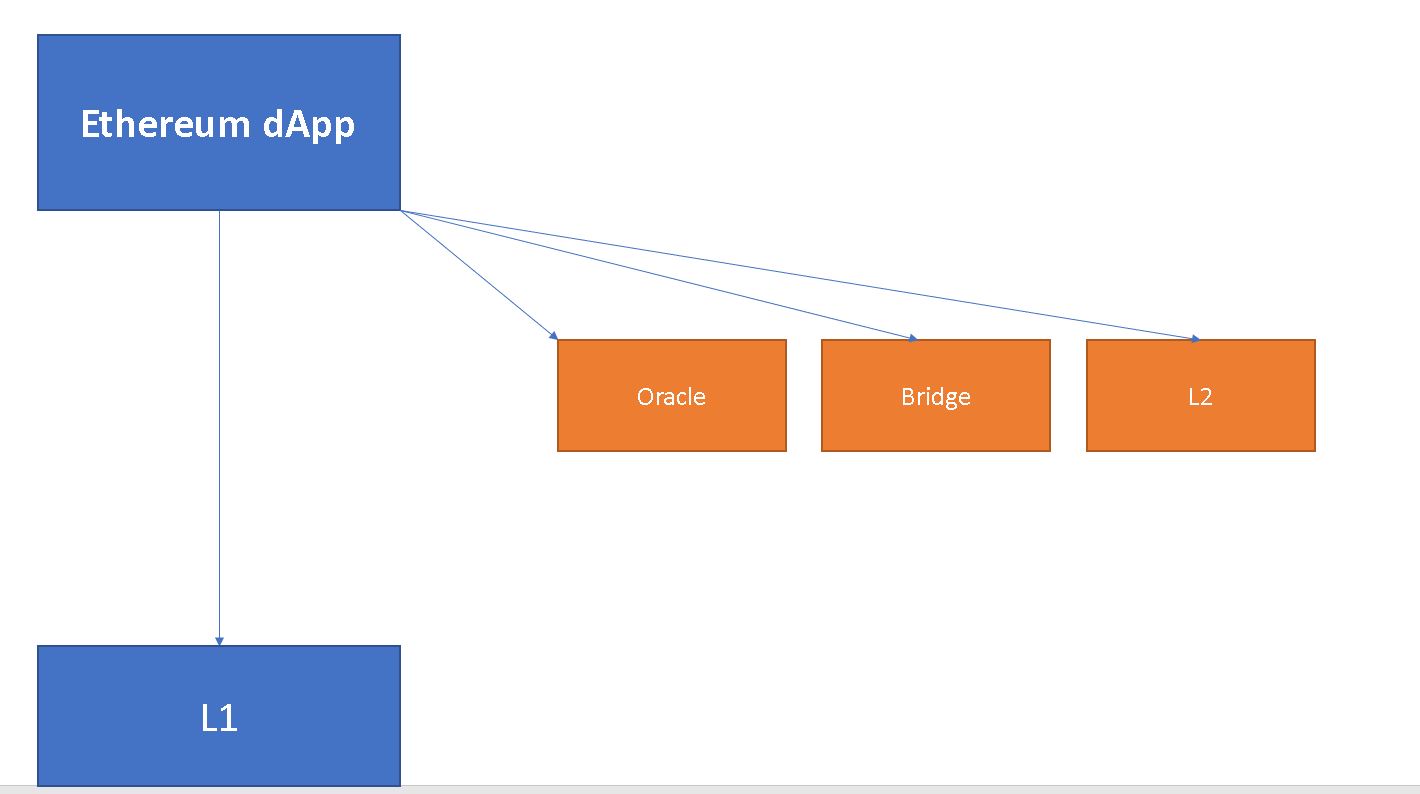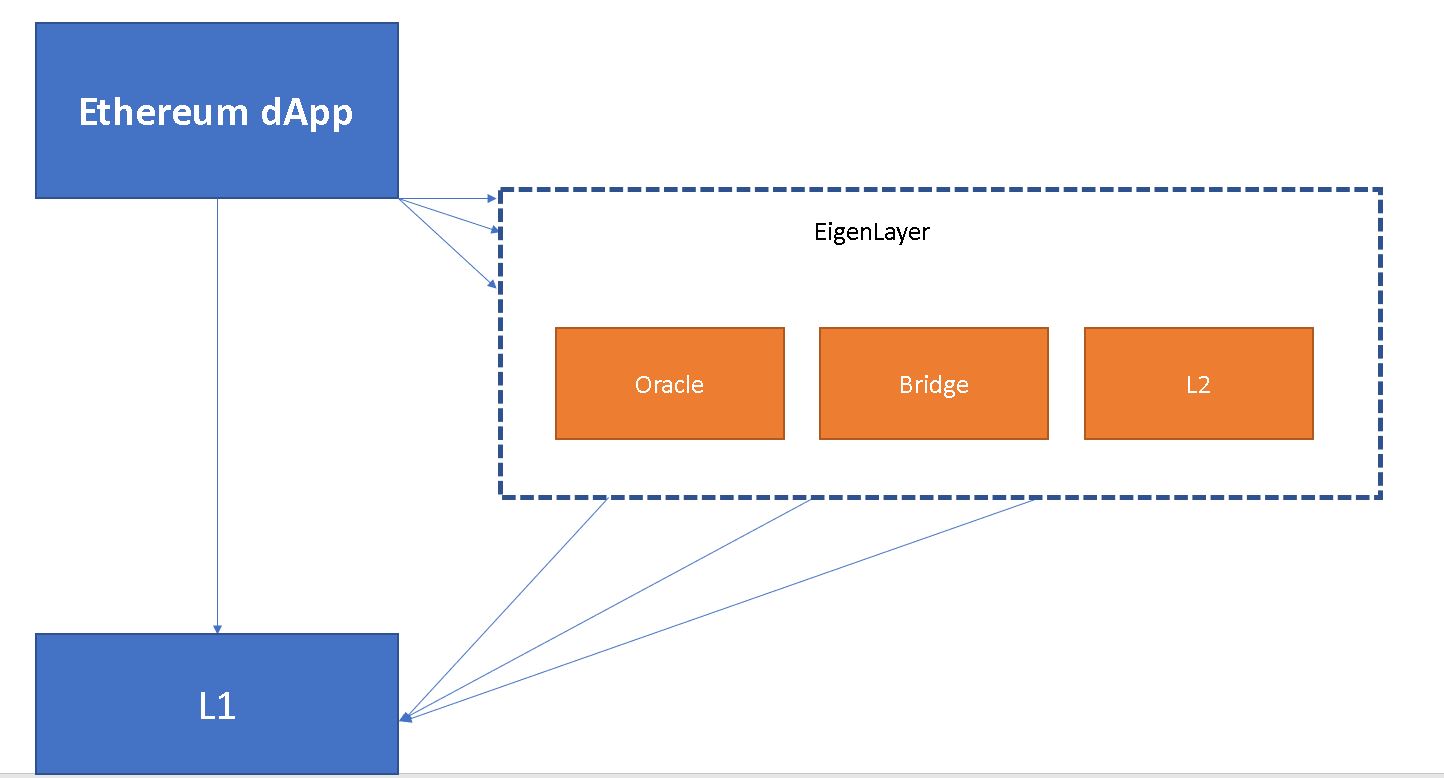The EigenLayer, a smart contract layer on Ethereum, allows users and developers to leverage existing trust networks to secure other core infrastructure and middleware layers. In laymen’s terms, this platform allows for those staking Ethereum to participate in a two-sided marketplace that amplifies the ability of protocols to increase trust and security.

Ethereum officially transitioned from Proof-of-Work to Proof-of-Stake (POS) on September 15, 2022. This transition was a landmark achievement, as the entire merge occurred flawlessly, resulting in almost no impacts to the billions of dollars in decentralized applications, developers, and users on the chain. While mining is no long possible on Ethereum, the new POS consensus mechanism allows users to stake their ETH to secure the network in exchange for rewards.
However – staked ETH only yields around 5-6% and sits essentially dormant, tying up massive capital for staking participants. The POS mechanism allows users interacting with or using the Ethereum network to have perfect trust in the network due to the incentives (and penalties for incorrect transactions) that the consensus provides. Every application built directly on Ethereum benefits from Ethereum’s security.

But what happens to applications that interface with or operate on “different” trust networks? These different networks are L1s, L2s, sidechains, oracles, bridges, and other infrastructures. App deployment is essentially permissionless on Ethereum, wherease consensus and other network changes are all voted on (which leverages the Ethereum security). Why does this matter?
Lets look at Chainlink – the preeminent oracle solution used on nearly every blockchain, including Ethereum. Chainlink is a decentralized oracle network that provides a secure and reliable connection between smart contracts on the Ethereum blockchain and external data sources such as APIs and payment systems. It allows smart contracts to access data from off-chain sources in a secure and reliable manner, enabling the execution of dApps with this data. Chainlink has to employ its own security mechanism, so users of Chainlink can’t leverage all the consensus related security. It obfuscates the users of these middleware protocols from the very thing that drove them to Ethereum in the first place.
It’s important to understand why this is important.

In the current state of the network, an Ethereum dApp interfaces with oracles, bridges, L2s (etc.) as an example. A malicious attacker need only corrupt one of these middleware layers to cause harm to the network. This is akin to robbing a store in a mall – you’re still robbing and impacting the mall, but you don’t actually touch most of the stores. Corrupt the oracle in this example and you could, in theory, touch many middleware applications with a single point of entry. Not good – this is not that expensive in the world of hacking, especially for smaller protocols.
Where the EigenLayer comes in, notionally, is through pooled and managed security.

Now, in order to corrupt something in the middleware, you’d need to corrupt the entire EigenLayer which is incredibly more expensive and complex.
I’m sure you’re thinking – “OK… this sounds cool… but I’m not a developer. Why should I care?”
The EigenLayer
ETH stakers currently are stuck sitting on their staked tokens earning a modest yield. The EigenLayer allows for these stakers to “re-stake” their ETH in a separate smart contract to help secure these middleware applications. Now, projects don’t need to create tokens as part of their trust layers, which affords a powerful alignment between deployed dApps and the Ethereum network itself through shared security. In essence, it’s a bit of a flywheel effect.
The more valuable services that are deployed leveraging the EigenLayer, the greater the return for Ethereum stakers. This greater return on staked ETH makes it more appealing and therefore drives a higher value to Ethereum itself. This higher value makes it more expensive to attack the network, thereby making it more secure. This leads to more projects choosing to deploy via the EigenLayer.
One of the biggest constraints in the current incantation of the Ethereum Network is data availability. Ethereum’s current data bandwidth (block size limited) is about 80kB/second. These are Napster and Limewire download speeds. The EigenLayer dev team has already deployed EigenDA, a data availability layer, which increases this bandwidth to over 15 MB/sec. This is an enormous scaling of throughput on the network, with zero cost of capital to stakers.
Projects using the EigenLayer benefit by having the choice to retain a cut of protocol revenue that they can distribute as they so choose. This can be through distributions to token holders, treasuries (etc.) while still paying the ETH stakers for their security. Protocols can also utilize “dual staking” where they stake native tokens alongside ETH to obtain greater security from both ETH stakers and their token community.
No one wants to get hacked. We’ve seen a plethora of painful bridge hacks, protocol hacks (etc.), but aside from rug-pulls (etc.), very rarely do network-based hacks occur on Ethereum based applications.
As more and more scaling solutions come out – Optimism and Arbitrum are two of the leaders in this area – there will be major interest in rollup sequencers for optimistic and ZK rollups. These sequencers can be used on the EigenLayer, which enables these scaling solutions to be decentralized and secure. Centralized sequencers can, in theory, censor and re-order transactions.
If cryptocurrency is ever truly going to go mainstream and replace some of the modern financial and data transaction infrastructure, security will be the enabling feature. Oracles like ChainLink are currently secured by the value of their token (LINK). By securing an oracle network that leverages staked ETH and their native token, these oracles can increase their security by orders of magnitude. We need these systems to be absolutely infallible if they’re ever going to become the de-facto way we transact data outside of the “world of cryptocurrency”.
Right now, the EigenLayer doesn’t have a token. I fully expect that they will, and that the demand will be significant. I personally will be watching this closely and looking to get in on it. This technology provides new opportunities for Ethereum applications to be as secure as the overall network itself without requiring additional risk from ETH stakers.
With hacks and exploits becoming increasingly mainstream, protocols simple cannot afford for these to happen. Think about it. A new bridge can deploy and gain all of the nearly $20billion in security base by interacting with the asset layer. Pretty awesome and transformative for the Ethereum ecosystem. I’ll be looking to check out the tokenomics of a possible token release when they become available.
For more information on Ethereum scaling, check out our article on this topic below. https://www.coinbusters.io/ethereum-polygon-aribitrum/
For more information on why we must carefully look at the tokenomics of a possible EigenLayer token, please see our article on VettaFi: https://www.etftrends.com/crypto-channel/tokenomics-for-the-savvy-investor-part-i/
As always, none of this is financial advice. Please use our research to aid in making your own conclusions.
















